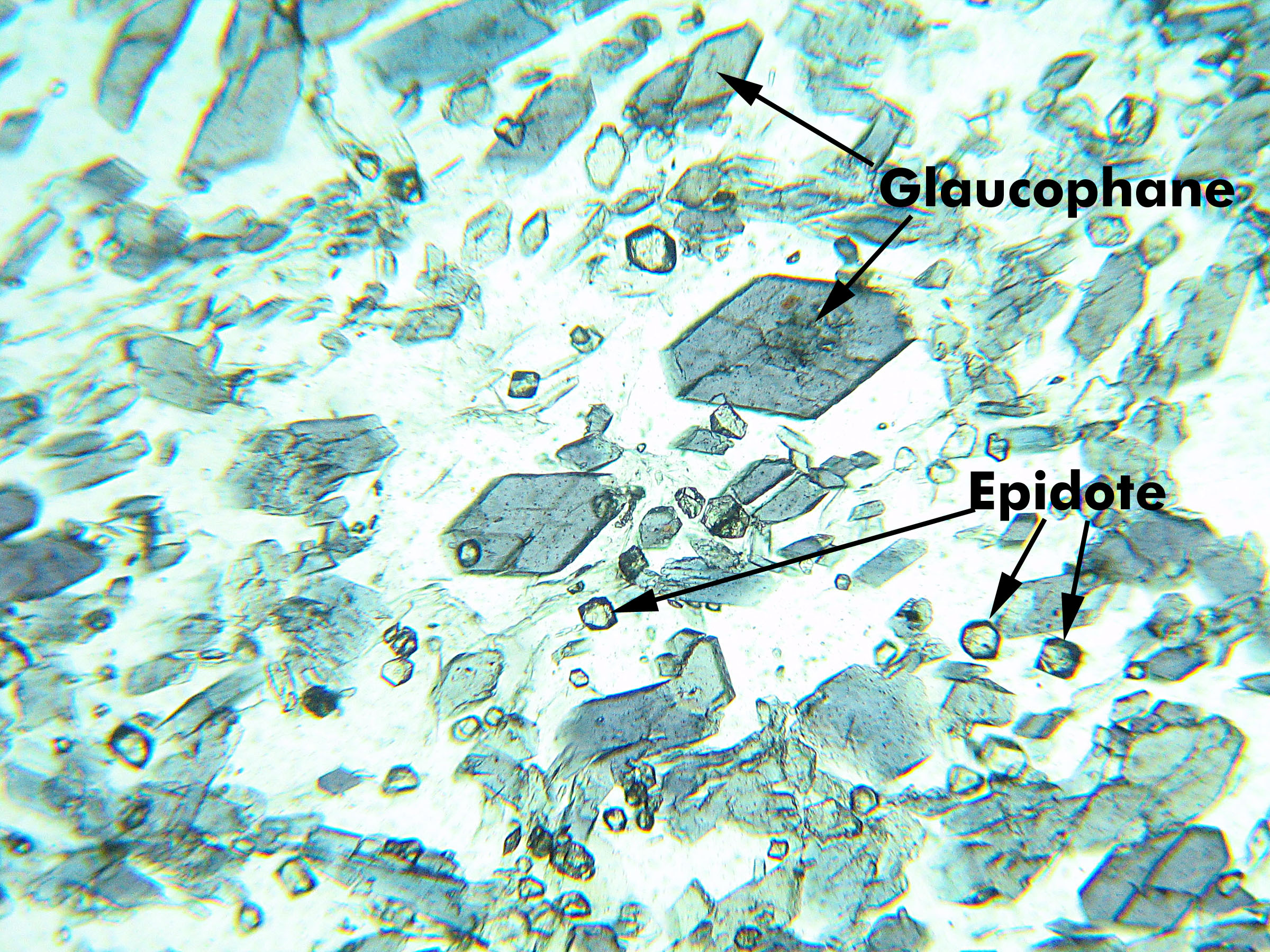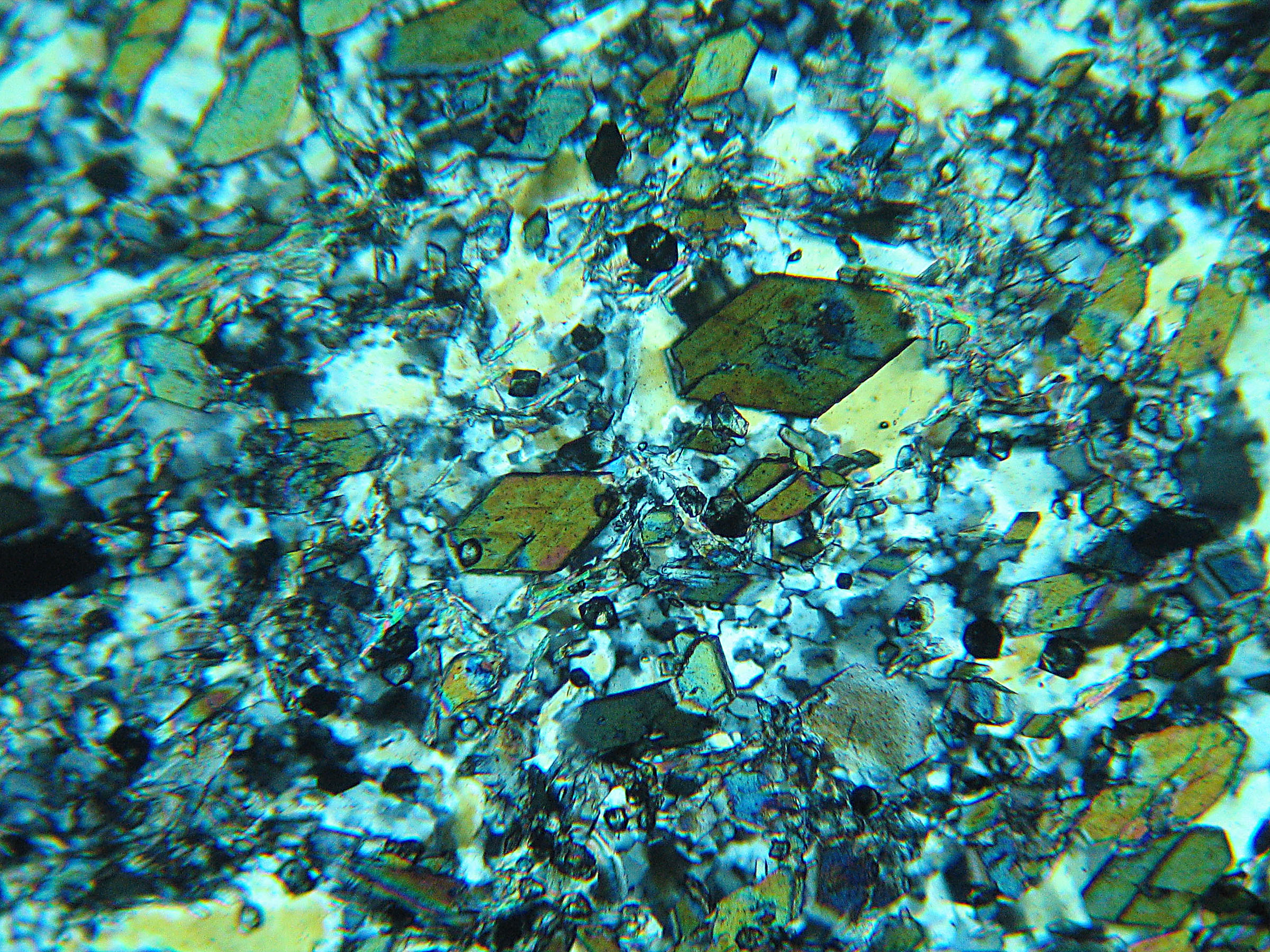Glaucophane (and epidote) in a Blueschist


Most of this thin section consists of blades of the blue amphibole glaucophane. In XP light, its interference colors are somewhat anomalous because the color of the mineral has added to the normal upper first-order interference colors. The light green mineral with relatively high relief is epidote (PP). Note that its interference colors are high-order in some grains and appear anomalous in others.
This specimen comes from Sonoma County, California. The field of view is 3.5 mm.




